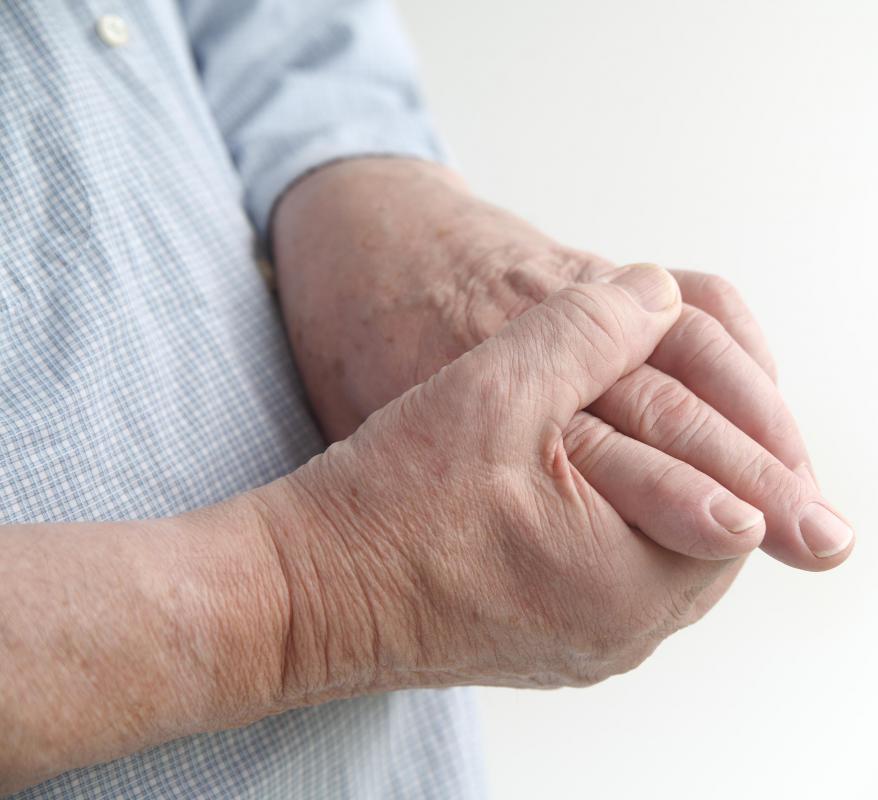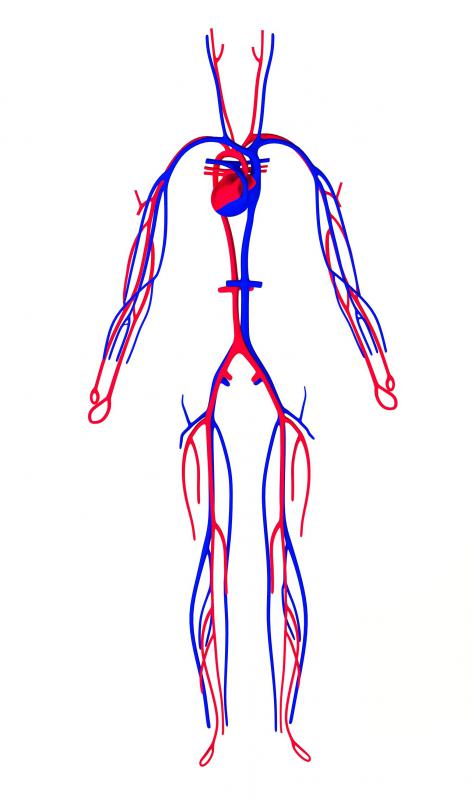At TheHealthBoard, we're committed to delivering accurate, trustworthy information. Our expert-authored content is rigorously fact-checked and sourced from credible authorities. Discover how we uphold the highest standards in providing you with reliable knowledge.
What is Peripheral Circulation?
One of the definitions of the word "periphery" is "outward bounds" or "border area." Peripheral circulation, in layman's terms, refers to blood flow that reaches the upper and lower extremities of the body and the surface of the skin. The upper and lower extremities and the surface of the skin can be thought of as the outward bounds or the border area of the body. This type of circulation also might be loosely described as blood flow to the arms, hands, legs, feet and the uppermost layer of the skin where blood vessels lie — the dermis. Although the epidermis is the uppermost layer of the skin, it does not contain blood vessels, so peripheral circulation refers to blood flow to the dermis and the extremities.
Peripheral circulation produces what are known as peripheral pulses, which serve as a confirmation, particularly to healthcare providers, that the extremities of the body and the dermis are receiving oxygenated blood and all of the nutrients they need that are carried in the blood. For example, the presence of a radial pulse or the pulse felt at the wrist confirms that there is blood flow to the hands. It is possible to have normal central pulses and one or more weak peripheral pulses if there is a health condition that affects a person's peripheral circulation. There are even situations in which central circulation is normal at the same time that peripheral circulation to an extremity or to part of the skin is totally absent.

When healthcare providers, especially emergency medical technicians (EMTs) and paramedics, splint fractured bones in the field, they should verify that there is adequate peripheral circulation. For example, if the patient's leg is broken and splinting takes place before the patient arrives at a medical facility, the medic assesses at least the dorsalis pedis pulse to ensure that blood flow is reaching the foot. He or she also should check the posterior tibial pulse. This verification of circulation to the periperhy of the body is performed before and after splinting.

Among the signs of poor peripheral circulation are cold hands and feet and a pale complexion. Any problems with the circulatory system, however, could produce the same signs as well as other symptoms. Circulation involves not only the pumping action of the heart but also the flow of blood through a vast network of blood vessels. Those blood vessels are the arteries, which branch into arterioles and finally into the tiniest vessels, the capillary bed. They also include the veins, which branch into venules and finally into the capillary bed as well.
AS FEATURED ON:
AS FEATURED ON:
















Discussion Comments
Okay, so my hands are almost always cold and they're paler than my arms. Distinctively. And my arms are almost always covered, so they receive minimal sunlight. My feet get really cold too and my toenails have a purplish hue when I don't wear socks.
Does this mean I have problems with peripheral circulation or am I just freaking out over something I read on the internet? And what can I do to alleviate these issues?
My uncle had peripheral artery disease. His doctor told him that fatty deposits were stopping the blood flow not only to his extremities, but most likely also to his brain and his heart.
He was mostly sedentary, but when he did walk, he got horrible pains and cramps in his calves. This kept him from exercising.
The doctor told him that he first needed to eat healthier and stop smoking. Then, he could worry about exercise.
After he made these changes, he became able to take a short walk every day, and he gradually increased the distance he walked. He is now much healthier. It's great that something like this can be reversed just by lifestyle choices.
You can have poor circulation in your legs temporarily or long-term. I notice a temporary tingling after I've had my legs crossed for awhile, but it goes away after I walk around a bit.
However, my friend has high blood pressure, and it caused her to have poor peripheral circulation. She had to take medication to lower her blood pressure in order to fix the circulation issue.
It's amazing what a little medication can do. She has great circulation and ideal blood pressure now, and as long as she continues to take the medicine, she will be fine.
@JackWhack – I think those are only symptoms if they suddenly appear. If a tan person suddenly noticed her extremities were whiter than the rest of her body, then there might be a problem. Also, if someone who normally has warm extremities notices that they have become cold without explanation, she should have her blood circulation checked.
I have the symptoms of poor peripheral blood circulation. However, I think I'm a rare case, because my symptoms are deceptive.
I have pale skin, so obviously, my extremities are pale. My hands and feet stay cold all the time, but so does the rest of my body. So, what might look like a danger sign on the surface to a stranger is completely normal to my entire body.
Post your comments